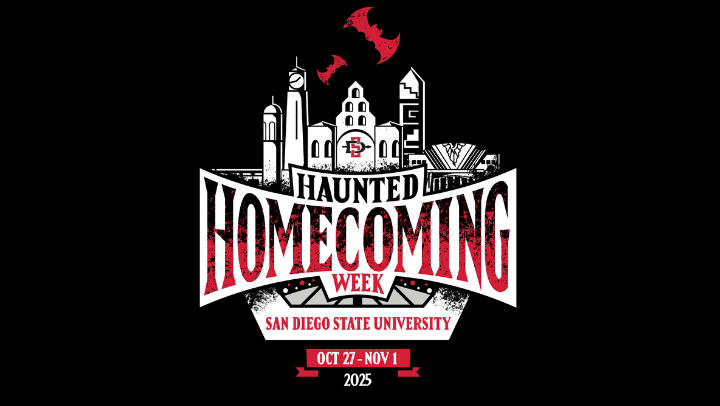Virtual Instruction Ramps Up for Fall
A summer institute showed faculty members how to add more structure and support into their classes to help students succeed and make sure they read the syllabus.

Welcome to the Course Café. We’ve been waiting for you.
Here at San Diego State University, this space has been set up by your instructor for students to gather and be a resource to each other as fall 2020 unfolds. Struggling with a question about course materials? Here’s another student who knows the answer. Just ask.
Like this imagined course itself, the café will exist in the virtual realm. And it’s just one element of a sweeping effort at SDSU over the summer to adapt the theory and practice of teaching to more effective and structured online learning.
The Flexible Course Design Summer Institute helped nearly 1,000 faculty enhance their skills and knowledge of teaching in the online environment in ways that may not have been possible in the hurried coaching that followed stay-at-home orders last March.
The three-week sessions by SDSU’s Instructional Technology Services (ITS) included a mix of required and elective modules totaling 20 hours and drawing upon partners from across campus.
James Frazee, SDSU’s chief academic technology officer and associate vice president for ITS, said the effort “exceeded expectations.”
The institute “endeavored to provide participants with strategies and learning technologies to teach in a hybrid or fully online environment,” Frazee said. “For SDSU faculty new to hybrid-flexible-online teaching, this multi-track program offered customizable experiences to enhance their skills and knowledge.”
If the workshops in March showed faculty what they need to know to drive a car, he said, the summer institute advanced them to the specialized training needed to operate a motorcycle.
It showed the way to a more structured and predictable approach — how to pick up on the online equivalent of a puzzled expression from a student, for instance.
Reaching out
Experienced online instructors helped faculty members master the technology needed to record lectures and meet other challenges of virtual teaching.
“Stuck at home since March, it has been wonderful to reach out across virtual space to connect with and coach fellow educators, all of whom have student success at the forefront,” said Elizabeth Pollard, a history professor and co-facilitator of the summer institute.
Faculty members also received tips on such matters as how to assess students when every test is essentially open book, promoting student engagement and conducting online labs. One module focused on inclusivity, and how online teaching may need to adapt to those with hearing impairments or financial difficulties, or who need to view course materials on a mobile phone.
“I went into it feeling completely overwhelmed,” said Eustacia Riley, art history lecturer in the School of Art and Design. “I came away feeling much more competent.”
Riley had used videos in her courses in the past but never had a good way of ensuring students actually used them or learned from them. Now she plans to adopt an idea from the institute to keep students engaged through in-video quizzing.
“My course will definitely be clearer and more accessible for its users,” Riley said.
Frazee said the institute’s lessons will continue to serve faculty members well even after the COVID-19 crisis passes. “I’m confident that faculty will see value in some of these technologies for teaching that would never have even been perceived as a possibility previously,” he said.
Take the virtual meeting space of a Course Café discussion forum, designed to get students to interact more with each other. A concept explained by a student’s peer, Frazee said, “sometimes resonates more than it does from a faculty member who has been eating, sleeping and breathing this for the past 30 years.”
Instruction clues
Similarly, sophisticated video tools allow faculty to see which parts of a recorded lecture students are rewinding, a “heat map” that could indicate where they may need to explain a concept differently.
Some other tidbits from the Summer Institute:
- In many classrooms, “Have you read the syllabus?” is a frequent refrain. Now there can be more of a nudge. Before proceeding with the content of a course, instructors may require students to pass a “syllabus quiz” to ensure their grasp on what Frazee calls their contract with the instructor.
- Faculty members will have access to on-demand support from ITS staff members via drop-in Zoom sessions, and will be able to schedule more in-depth coaching. SDSU’s Faculty Instructional Technology Center, previously a lab in Adams Humanities for faculty to gather, also has been translated into a virtual realm. One size won’t fit all. The institute emphasized the need for flexibility and variance in approaches to teaching this fall. That Course Café won’t show up everywhere.
- Frazee said he expects faculty will continue to lean on each other for support as fall 2020 unrolls. Amid the sadness that students are missing out on much of the usual face-to-face campus experience, he noted, the summer institute recognized that many faculty members are in the same boat and that virtual teaching requires a lot of extra work for them, too. “It was by faculty for faculty, and it was designed specifically to build community among these faculty members who are often very isolated from one another,” he said. “We wanted to make those connections.”



